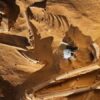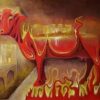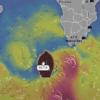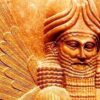Puzzling ancient discoveries and archaeological finds have a way of captivating the humankind, perhaps because it’s just too easy to dream up interesting explanations for how and why things exist.
These five mysterious figurines collections have left people in awe and made scientists searching for explanations year after year. The origin and production date of these ancient artifacts is still a source of numerous speculations.
1. ‘Nomoli’ Sapi Stone Figures
Discovered in Sierra Leone, West Africa
A superb collection of stone figurine antiquities known as “Nomoli” found buried in the ground in southeastern Sierra Leone and presumed to have been made by the original inhabitants of the country. They depict kind of semi-human beings and are characterized by large heads cantilevered forward from the neck, prominent eyes, broad fleshy nose and full lips.
The date of their production has been a source of speculation. These figures are extremely old, with some estimates dating them as far back as 17,000 BC. However, some aspects of the figures – namely the high melting temperatures that would have had to have been used to create them, and the presence of steel manipulated into perfectly spherical balls – suggest they were constructed by a civilization that would be considered highly advanced for its time if they were indeed constructed around 17,000 BC.
Discovered in Japan
Collection of ceramic human- or animal-like figurines dated from Japan’s late Jomon period (14,000–400 BC). Constructed of clay, and typically 10 to 30cm high, around 15,000 have been discovered all over the country in various styles. Shakōki-dogū (1000–400 BC), “goggle-eyed type” figurine. Tokyo National Museum. (Image Source) Most are female and feature big eyes, small waists and wide hips. They are often covered in patterns suggesting tattoos. Many also appear to have pregnant stomachs and swollen breasts.
The purpose of the Dogu remains unknown although theories abound. Discovered in Iraq
A number of Ubaid statues found in at Al Ubaid, archeological site in Iraq, depict strange, lizard-like humanoid figures in unique, unceremonious poses that seem to indicate they were not gods (such as the animal-headed deities of Egypt), but rather a kind of race of lizard people. Of course, the statues have been drawn into stories and theories of reptilian aliens that used to roam the earth (and perhaps still do, according to conspiracy theorists). Although this seems unlikely, their true nature remains a mystery.
Female lizard looking figurines. Photographed at the University of Pennsylvania Museum of Archaeology and Anthropology. ©Mary Harrsch (Image Source)
The figurines are presented with long heads, almond shaped eyes, long tapered faces and a lizard-type nose. What exactly they represent is completely unknown. According to archaeologists, their postures, such as a female figure breast-feeding, does not suggest that they were ritualistic objects. So what did these lizard figures represent? Whatever they were, they appear to have been important to the ancient Ubaidian people.
Discovered in Serbia
The culture that flourished from about 6000 BC to 3000 BC, was named Vinca-Tordos Culture of Yugoslavia and western Romania and derived its name from the village of Vinca located on the banks of Danube river, only 14 km downstream from Belgrade.
Vinca clay figure ©Michel wal (Image Source) One part of the Vinca legacy are curious masks and the most informative costumed figurines depicting strange looking men and women in extremely modern clothes like narrow skirts, and sleeveless upper-body panels, complimented with hip belts, aprons, jewelry pieces, shoes, caps, hairstyles etc.
Since the language of the Vinca still remains undeciphered, unearthed artifacts constitute the only source of knowledge about this culture.
Ancient terracotta figurines found in Ghana, which were created by an unknown civilisation and have become iconic representations of prehistoric African art.
Prehistoric terracotta figurine discovered in Ghana, Africa
Researchers believe that most of the figurines which were dug rep represent some of the ancestral figures or people and even animals. The most significant part of these discoveries is that they reveal a lot about the weapons, hairstyles and clothing used by the ancient civilization to a large extent.
There are various indications of high scale of spiritual and ritual activities which were carried on in these areas which was inferred from studying the figurines. Many of these ancient forms of art are having hollow cavities, which suggest that these substances were used for pouring certain religious items during the rituals.
Featured image: Dogu Figurine ©Davide Ferro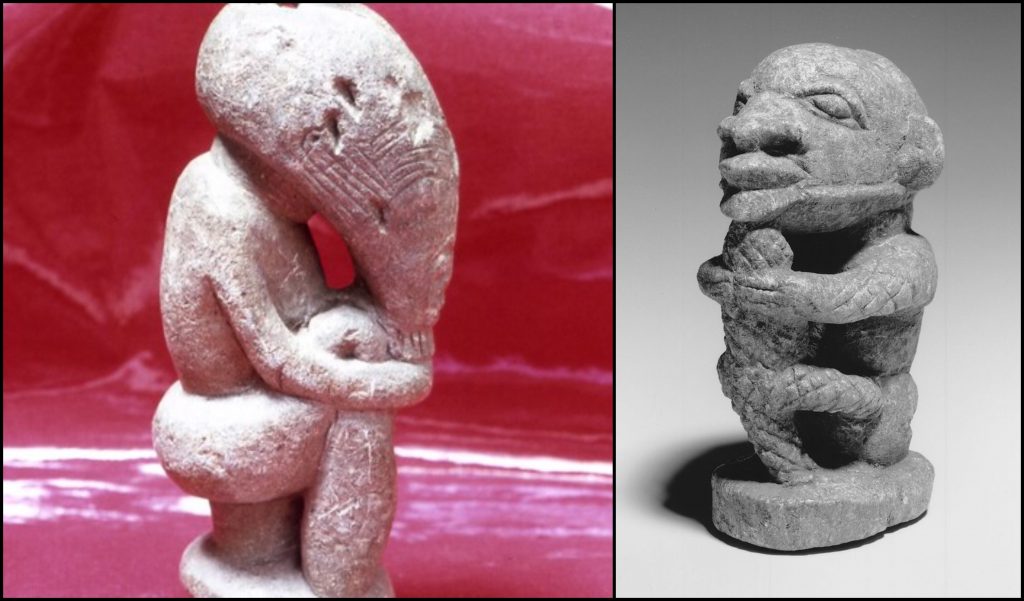
2. Dogu Figures
Shakoki or goggle-eyed doku are named after the figure’s eyes which bear a resemblance to traditional Inuit snow goggles. They described by scholars as looking like “spacemen,” because their eyes are exaggerated and they resemble some sort of humanoid wearing a space suit.

Some experts believe they are linked with fertility rituals and shamanistic rites. Others think they were used in a similar way to Voodoo dolls and the illnesses or misfortunes of the living would be transferred to the figurines.
3. Lizard-Like Figurine Of The Ubaid Culture
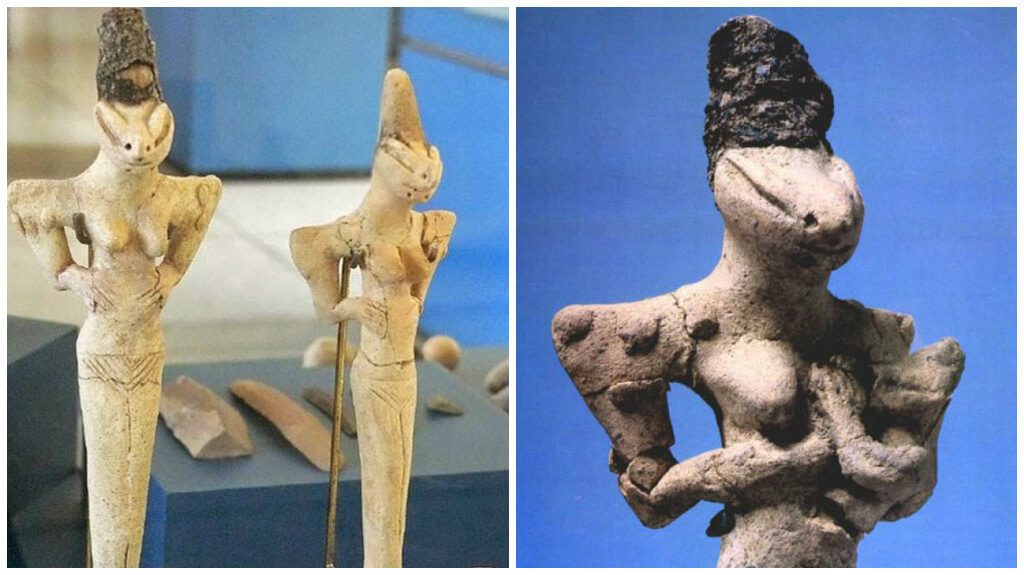
4. Mysterious Vinca Figurines

5. Ancient Terracotta Figurines Of Ghana


